Folly Brook rises at Highwood Hill, Mill Hill, and flows between the long spit of high ground which is the Ridgeway, and the elongated hill which carries Totteridge Lane eastwards.
The steam formed the boundary between Middlesex and Hertfordshire until comparatively recently. Most locals would be suprised how far south the county boundary extended! Folly Brook is a tributary of the Dollis and has its confluence with that river near Woodside Park Station.
An 1886 OS map held at the London Borough of Barnet Archive is marked with cesspool overflows, which effectively form the western sources of the Folly Brook. They carried waste from the large houses on Totteridge Lane, down into the brook. Prosecutions for pollution were still occuring as recently as 1972, testifying to the relative rurality of the area.
The stream flows along a long narrow valley shadowed by the vast complex of the green-roofed National Institute for Medical Research (NIMR).This building, designed by Maxwell Ayrton, the architect of Wembley Stadium, dominates the north London skyline. I have seen it from as far away as the reservoir above Guildford and from Biggin Hill aerodrome. However, the view I remember most vividly is of NIMR standing high above the tree line ahead of us as my family strolled along the alley from Ballards Lane, Finchley, towards Dollis Brook in the early 1960''s.
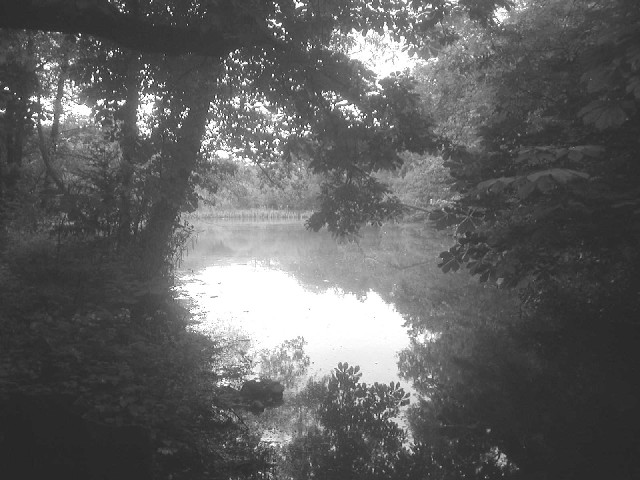
The Valley of the Folly Brook: Shades of Humphrey Repton
at Darland''s Lake
NIMR seemed to suggest distant lands to me, the possibility of adventure and discovery. The contrast between the familiar streets of Finchley and the Green Giant, squatting toad-like and seemingly faraway, served as a focus for whatever residue of belief in fairytales survived in me beyond the age of eight or so.
In 1971 the family relocated to Burnt Oak. One hot June day I decided to bunk off school and go in search of the building. I wondered down Watling Avenue and began to climb up onto the Mill Hill ridge, always heading towards where I estimated the building to be. Suddenly I found myself transported out of the traffic-silted density of Mill Hill Broadway into a pre-war ruralism.
I still recall my first view of NIMR, just around a small curve in the Ridgeway. It was a hissing, steaming, bedlam of a place, plonked in this salient of the green girdle. I caught glimpses of laboratory glassware and white coats through the steel-framed windows. An eerie clanking and buzzing escaped from Mill Hill''s own dark satanic mill. I thrilled at the sight of those odd drum-shaped devices sticking out of the roof at the top, right-hand side. Were they air raid sirens?
Our move to Burnt Oak that April had been traumatic for me, unequipped as I was with any internal map of the city at that age. Suddenly I had found a bridge between my new and my old home areas. It was a real mind-bender. Visible from both, NIMR became the hub at the centre of my Barnet universe.
I still experience a little of that excitement whenever I visit NIMR. The place just has to be gazed up at, homage paid to this singular edifice which provides a direct connection back to my origins.
There is an aura of danger, of intense secrecy, about the place (intensified by the security arrangements introduced following the actions of animal rights activists). Sadly the original steel window frames have been removed from the lower floor. Instead, reflective sheets of glass obscure the proceedings inside the building. From the southern side however, a magnificent array of original windows is visible.
NIMR is the centre for research carried out by the Medical Research Council. The advent of the Human Genome Project and of computerised bioinformatics has placed NIMR in the front row of gene-based medical research. The next building along, 1-3 Burtonhole Lane has an array of brass plaques on its doorway. These name various "spin out" and "start up" companies trying to hawk the medicines and processes developed at NIMR.
I love NIMR and, on a more recent visit, I decided to get past the security and into the place. I walked into the reception outhouse, which is a kind of mini-NIMR, complete with copper roof, and told the receptionist I was writing an article on the place. I was led across to the main building by the on-site safety specialist and through the front entrance.
I was in!
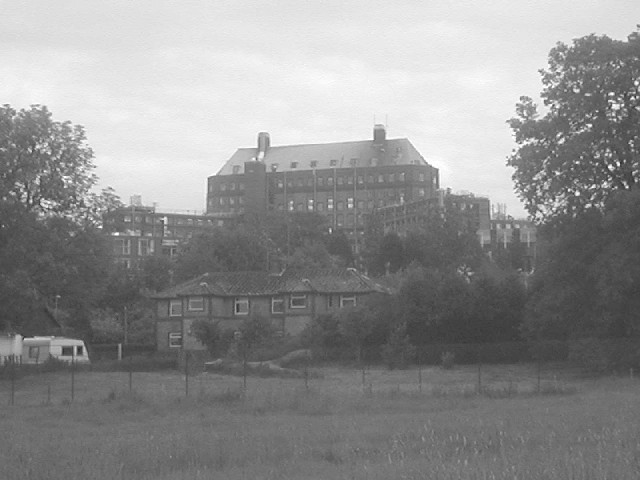
The House on the Hill: NIMR Looms over the Valley
of the Folly Brook
I didn''t get to see much of the building, though I was tempted to go walkabout while my usher went off to the media-centre. I could''ve got into the lift, ridden to the top floor and got that view in the seconds before security closed in and grabbed me. However I behaved myself, admiring the original art-deco lighting and the columns that slice the entrance hall. The media-centre people showed me a beautiful photo album of black and white shots of NIMR but didn''t offer to scan one for me. Instead they gave me the official public-relations shot with cows in the foreground. Is that any way to treat a devotee?
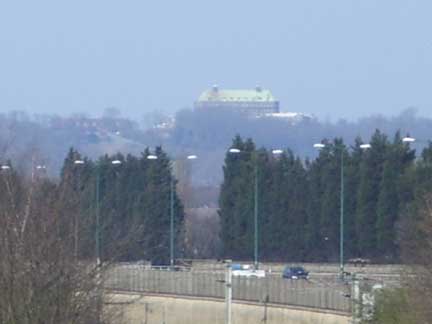
Nimar!! The research labs tower over the
M1 and the valley of the silkstream
St Vincent''s Lane, to the left of NIMR leads down into a valley. From here NIMR crowns the ridge, yet security for the place extends right down onto the valley floor with fencing and an abundance of CCTV cameras.
There is now talk of closing NIMR and removing the work to Cambridge, for closer links with the university and, I suspect, Huntingdon Life Sciences'' main labs. It isn''t difficult to imagine the fate of the building. Either it will be torn down to make space for dense estates of "luxury flats" or it will become an exclusive block of apartments itself, undoubtedly with a gym in the basement and in-house organic café and aromatherapy facilities. Either way, something will have been lost as a result.
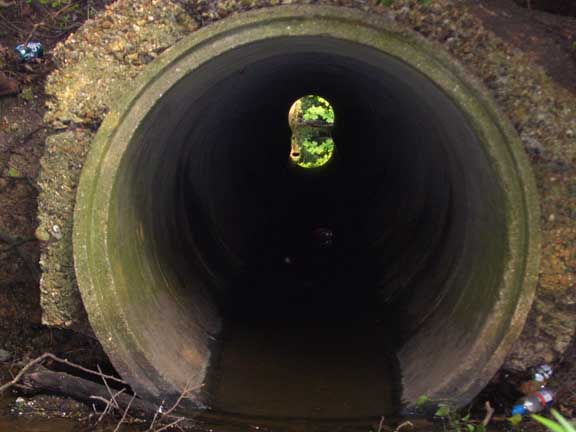
The Folly Brook is piped below Southover...
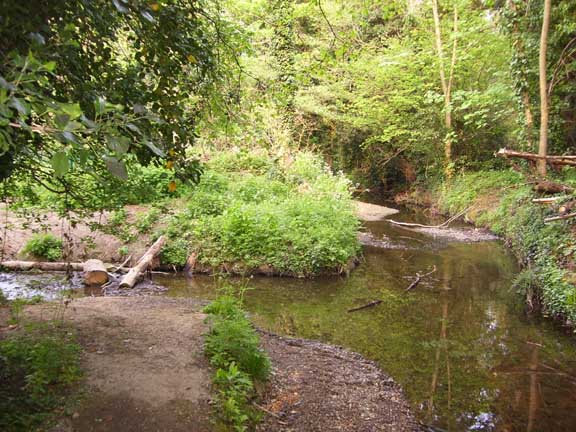
...to its confluence with the Dollis in Woodside Park

